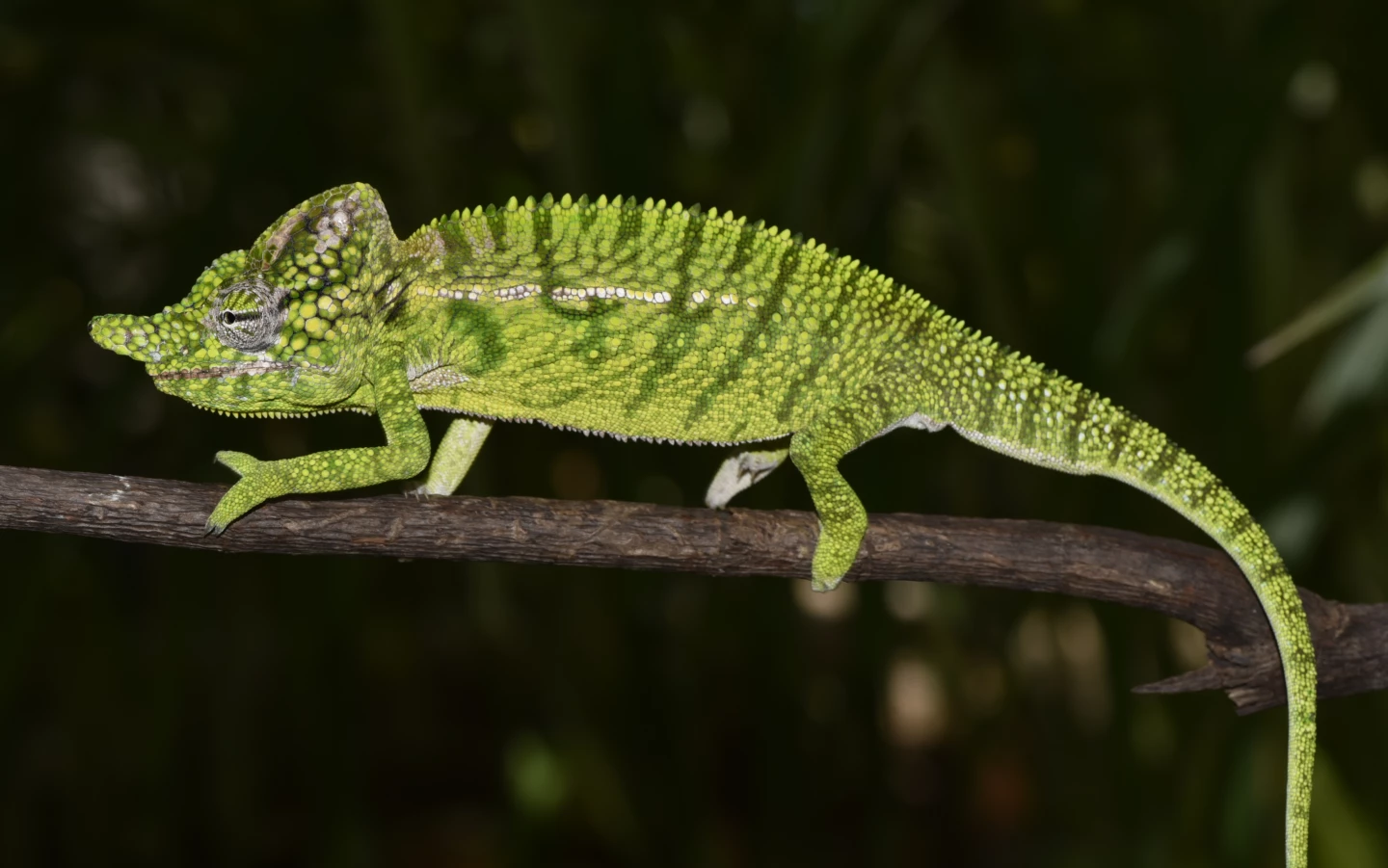A species of chameleon that’s been lost to science for over a century has now been found. Voeltzkow’s chameleon, or Furcifer voeltzkowi, was rediscovered during a research expedition to Madagascar, which identified several surprisingly colorful individuals.
First scientifically described in 1893, Voeltzkow’s chameleon hasn’t been seen since 1913, earning it a spot on the Global Wildlife Conservation’s (GWC) top 25 “most wanted” lost species list. As the name suggests, these animals and plants have all been lost to science for decades, with many feared extinct. The organization sends out expeditions to search for these lost species, which is the first step towards figuring out how to help them.
In April 2018, the GWC sent out a two-week expedition to northwestern Madagascar to hunt for Voeltzkow’s chameleon. For most of the trip, the species remained lost, but in the last few days the team finally found the elusive reptile. A small but healthy population was discovered, including three males and around 15 females.
The expedition also revealed that the females are very brightly colored, appearing in intricate patterns of purple, orange, red, green, black and white, with striking red dots on their sides. Like many chameleons they can change color at will.

If Voeltzkow’s chameleon is anything like its closest relatives, it’s not entirely surprising that the species has been missing for so long. A related species called Labord’s chameleon is known to only live for four or five months, after spending almost twice that long as an egg. Scientists expected Voeltzkow’s chameleon to have a similarly short lifespan, perhaps a few weeks longer, giving them a very small window of opportunity to find adult specimens.
This marks the sixth species from the 25 most wanted list to have been rediscovered in recent years. The others include Jackson’s climbing salamander, the velvet pitcher plant, Wallace’s giant bee, the silver-backed chevrotain and, earlier this year, the Somali sengi.
“The Voeltzkow’s chameleon adds color and beauty to the planet, and reminds us that even when all seems lost, a great adventure can rekindle hope even for species we haven’t seen since Woodrow Wilson was president,” says Don Church, GWC president. “Now we have so much to learn about this extraordinary reptile, including how we can best save it from extinction.”
The rediscovery was reported in a study published in the journal Salamandra.
Source: Global Wildlife Conservation







